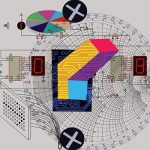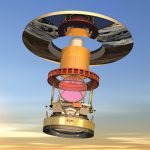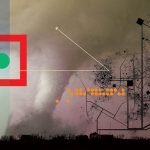STEM
March 1, 2017

Gates gift
A historic $279 million donation will enable the Institute for Health Metrics and Evaluation to forecast health scenarios.
February 27, 2017

Yes, it's rocket science. Really.
Inspired by the film "Hidden Figures," the Obama White House honored a group of women of color who have contributed to NASA’s success. Two UW alumnae were included.
September 1, 2016

Deep data
In April 2015, the Axial Seamount, an active underwater volcano about 300 miles off the coast of Oregon, erupted. For the first time ever, scientists, engineers and students from the UW and around the world could watch it in real time thanks to an elaborate array of sensors they installed a year earlier.

The batwoman
Forget the silly myths about vampires. Sharlene Santana discovered that the role of bats in the environment is underrated. And most don't want to bite you.
December 1, 2015

Tech that knows
A new wearable technology developed at the UW called MagnifiSense can detect what devices and vehicles the user interacts with.
September 1, 2015

High volume
Recordings by current and former UW researchers in fjords show that melting at glacier edges in the narrow rock-edged canyons are some of the noisiest places in the sea.

Cellphone guilt
A new UW study finds that cellphone use at playgrounds is a significant source of parental guilt, as well as a powerful distraction when children try to get caregivers’ attention.

Cling like a fish
Scooting around in the shallow, coastal waters of Puget Sound is one of the world’s best suction cups. It’s called the Northern clingfish, and its small, finger-sized body uses suction forces to hold up to 150 times its own body weight.

Space explorers
Fifty years is no time at all for a universe that dates back 13.8 billion. But for those who study the sky, the past five decades have changed everything.
March 1, 2015

Mirage Earths
Planets orbiting close to low-mass stars—the most common stars in the universe—are prime targets in the search for extraterrestrial life. But new research led by an astronomy graduate student at the UW indicates some such planets may have long since lost their chance at hosting life.

Baby face
It’s a game parents like to play: What will my child look like when she grows up? A computer could now answer the question in less than a minute.
December 1, 2014

Phone training
Mobile phones have become second-nature for most people. What’s coming next, say UW researchers, is the ability to interact with our devices not just with touchscreens, but through gestures in the space around the phone.

Toddler logic
Researchers have found that children as young as 2 intuitively use mathematical concepts such as probability to help make sense of the world.
September 1, 2014

Fighter flies
University of Washington researchers used an array of high-speed video cameras operating at 7,500 frames a second to capture the wing and body motion of flies after they encountered a looming image of an approaching predator.

Robot response
UW electrical engineers have developed telerobotics technology that could make disaster response faster and more efficient.

About everything
Computer scientists from the UW and the Allen Institute for Artificial Intelligence in Seattle have created the first fully automated computer program that teaches everything there is to know about any visual concept.
June 1, 2014

Deep into oceans
The chemistry of the ocean has changed dramatically over the decades that Terrie Klinger has been studying her beloved West Coast waters.


